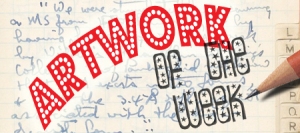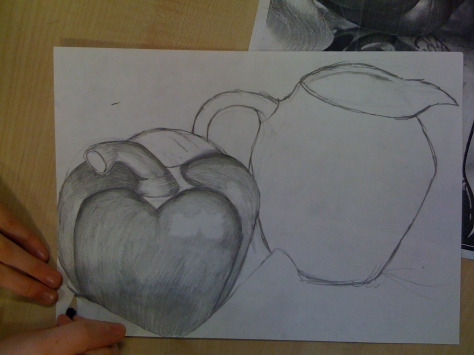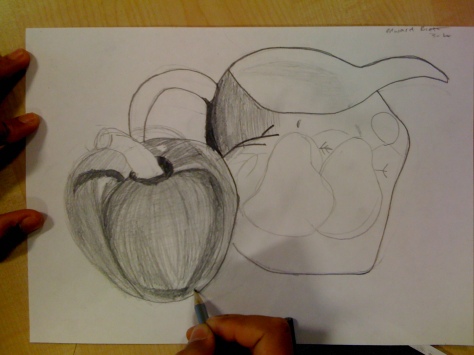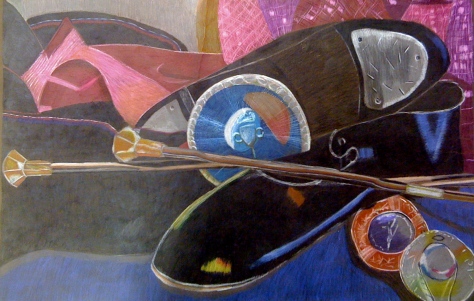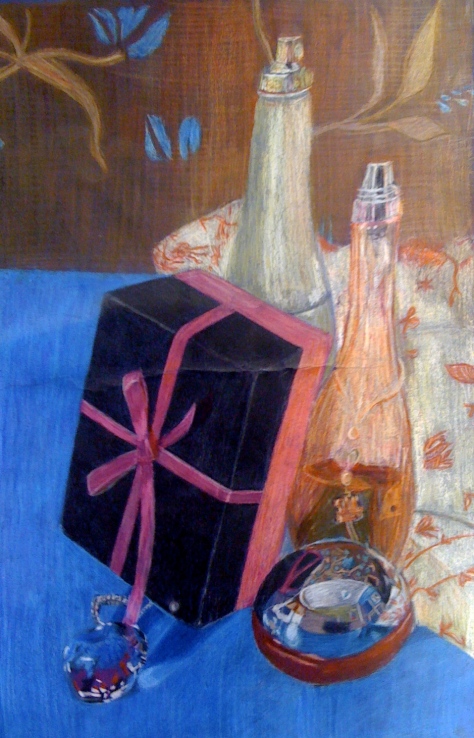This week’s piece comes from the mind of Kirstie G (S3,OLSP). At first you may not understand it, but continue to look at it… You will soon start to see the fractured image of still life objects. Bottles and vases, jugs and bowls. These are rendered in a variety of media from acrylic and watercolour paints to pencil and charcoal. Some are rushed, some are painstakingly worked on. Each of these works have been completed in full and then sliced apart; artistic vandalism. It was tough for Kirstie to make the decision to do it and to then actually do it, but I think it was the right decision.
Her work reminds me of the likes of Braque (Picasso’s underestimated co-creator of cubism). Your eye is forced around the work to make sense of it. Little sections are painted well to prove that she can paint. Though that’s not the point. Painting has become snobbish in schools. It’s all about realism and copying. There is little time given to expression and experimentation. It is for this very reason that I feel that this piece is extremely strong. It’s taking chances. It’s not a piece created to pass an exam. It’s created to be a good piece of art and that’s what counts isn’t it?
There’s also great aspects of Leger in her work. The lines that dissect the work into a living three dimensional jigsaw. Kirstie’s work is relief, it sits on many levels and the observer is able to lean around foreground objects to view more of the background objects. It’s like four or five paintings in one. It is just so refreshing to see pupils take on something as hard to understand as abstraction and cubism and learn about it practically instead of remembering about it critically. A well deserved ‘Artwork of the Week’.
 Kirstie’s relief piece before the dissection lines were painted in
Kirstie’s relief piece before the dissection lines were painted in

